Brother MFC-7440N User Manual
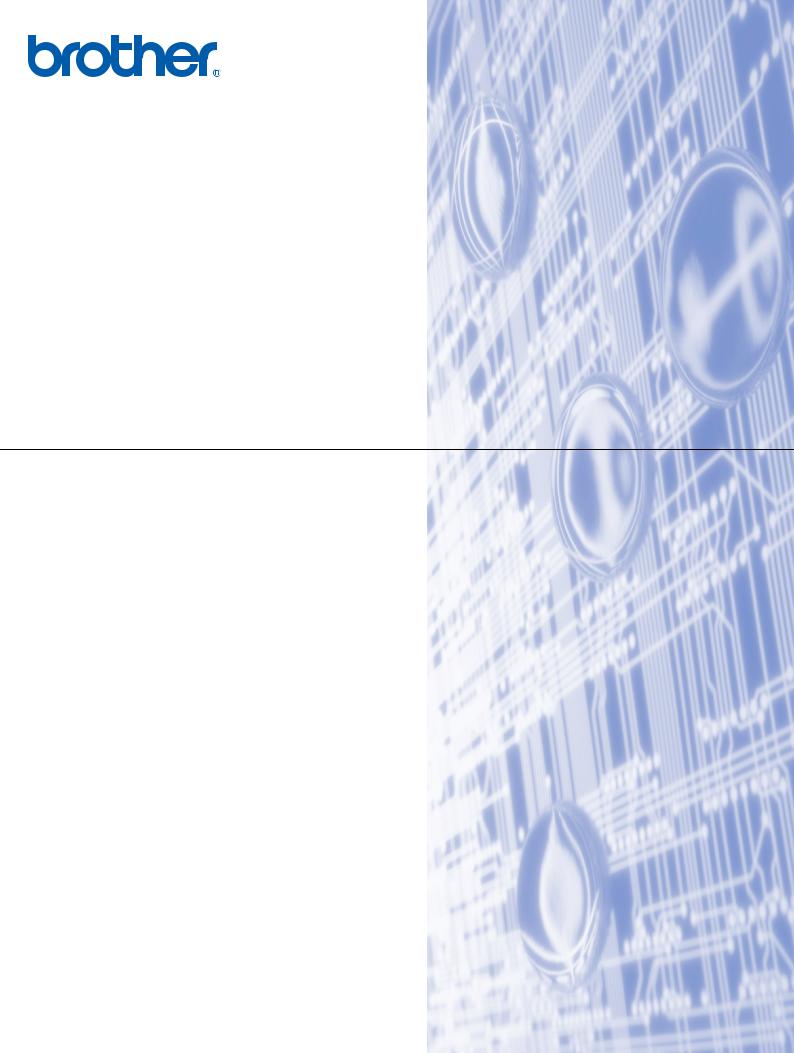
Multi-Protocol On-board Ethernet Multi-function Print Server
NETWORK
USER’S GUIDE
MFC-7440N
Please read this manual thoroughly before using this machine on your network. You can view this manual in HTML format from the CD-ROM at any time, please keep the CD-ROM in a convenient place for quick and easy reference at all times. You can also download the manual in PDF format from the Brother Solutions Center (http://solutions.brother.com).
The Brother Solutions Center (http://solutions.brother.com) is your one stop resource for all your printing needs. Download the latest drivers and utilities for your machine, read FAQs and troubleshooting tips or learn about special printing solutions.
Version A
ENG
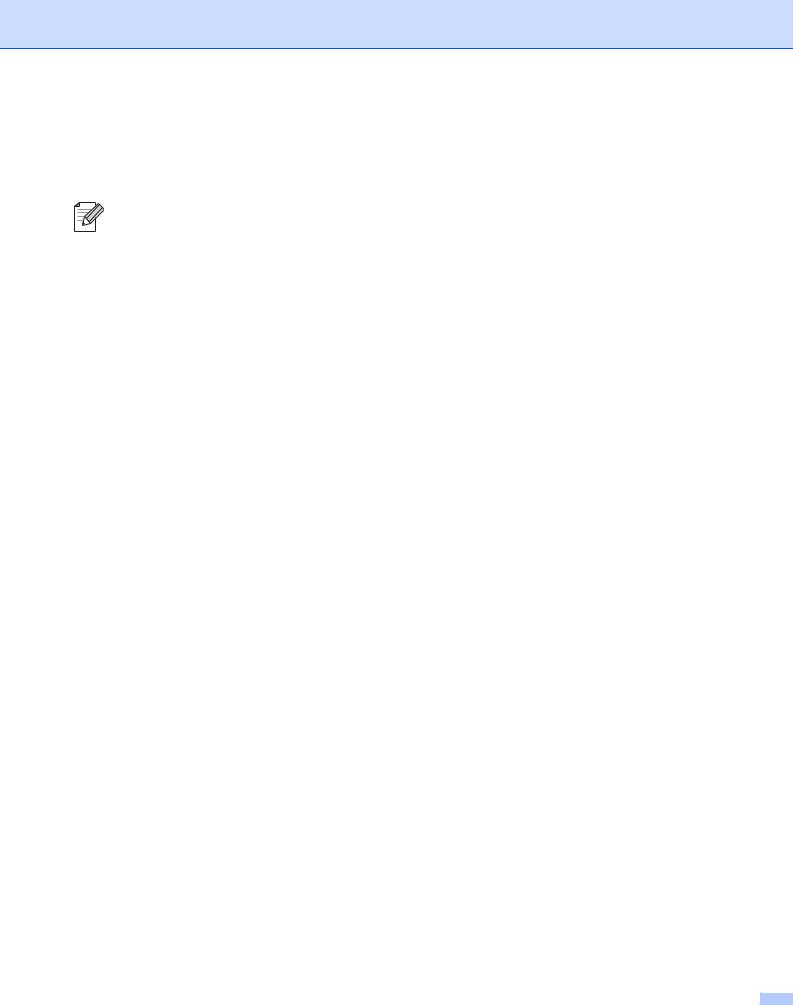
Definitions of notes
We use the following icon throughout this User’s Guide:
Notes tell you how you should respond to a situation that may arise or give tips about how the operation works with other features.
Trademarks
Brother and the Brother logo are registered trademarks and BRAdmin Light and BRAdmin Professional are trademarks of Brother Industries, Ltd.
UNIX is a registered trademark of The Open Group.
Apple and Macintosh are registered trademarks and Safari is a trademark of Apple Inc.
HP, Hewlett-Packard, Jetdirect and PCL are registered trademarks of Hewlett-Packard Company. PostScript is a registered trademark of Adobe Systems Incorporated.
Windows Vista is either a registered trademark or a trademark of Microsoft Corporation in the United States and other countries.
Microsoft, Windows and Windows Server are registered trademarks of Microsoft Corporation in the United States and/or other countries.
Java and all Java-based trademarks and logos are trademarks or registered trademarks of Sun Microsystems, Inc. in the United States and other countries.
Firefox is a registered trademark of the Mozilla Foundation.
All other terms, brand and product names mentioned in this User’s Guide are registered trademarks or trademarks of their respective companies.
Compilation and publication notice
Under the supervision of Brother Industries Ltd., this manual has been compiled and published, covering the latest product’s descriptions and specifications.
The contents of this manual and the specifications of this product are subject to change without notice.
Brother reserves the right to make changes without notice in the specifications and materials contained herein and shall not be responsible for any damages (including consequential) caused by reliance on the materials presented, including but not limited to typographical and other errors relating to the publication.
©2008 Brother Industries Ltd.
i |
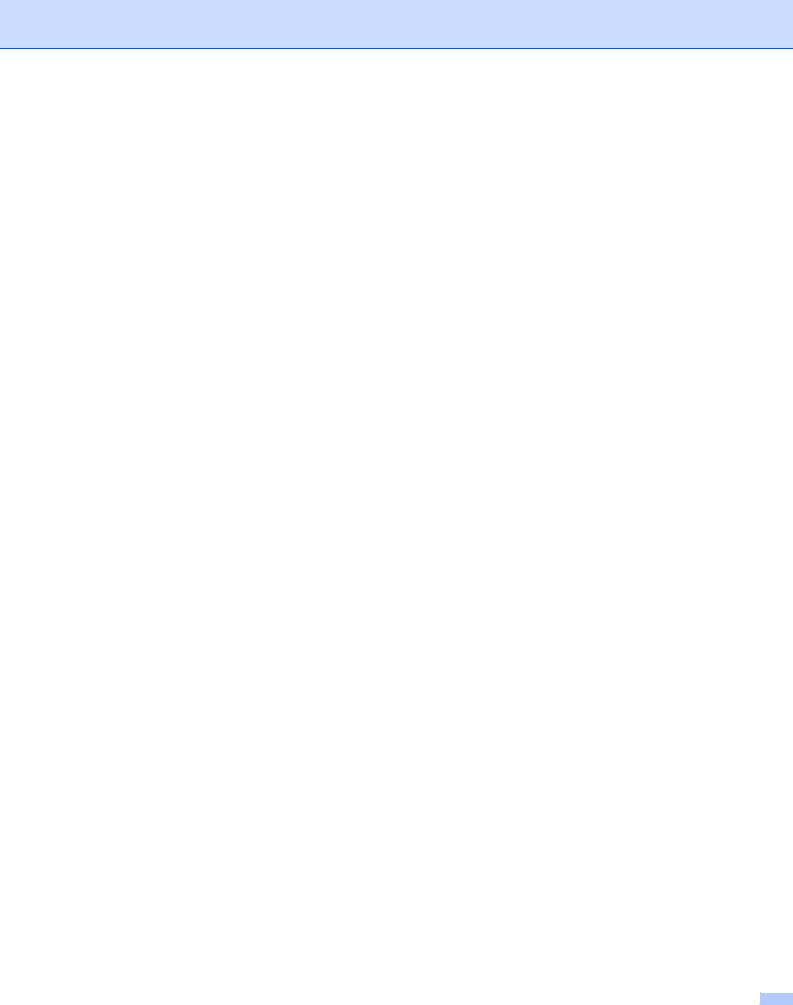
IMPORTANT NOTE
Windows® XP in this document represents Windows® XP Professional, Windows® XP Professional x64 Edition and Windows® XP Home Edition.
Windows® Server 2003 in this document represents Windows® Server 2003 and Windows® Server 2003 x64 Edition.
Windows Vista® in this document represents all editions of Windows Vista®.
ii
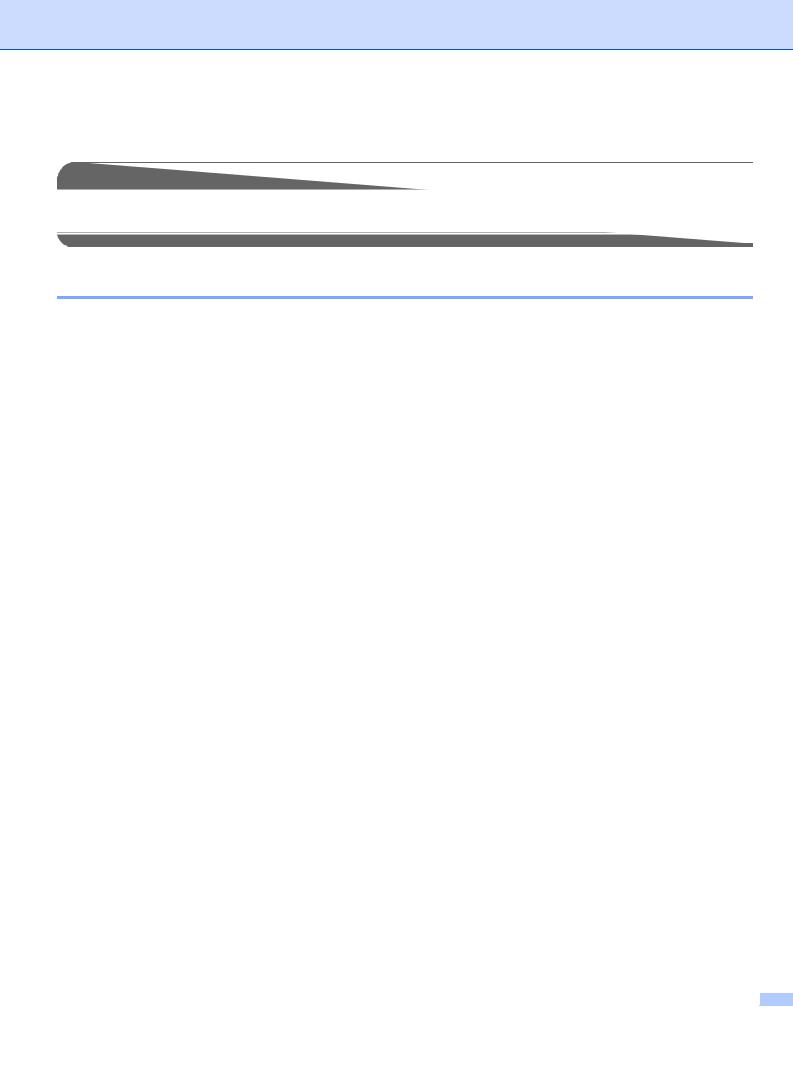
Brother numbers
IMPORTANT
For technical and operational assistance, you must call the country where you purchased the machine. Calls must be made from within that country.
For Customer Service
In USA |
1-877-BROTHER (1-877-276-8437) |
In Canada |
1-877-BROTHER |
In Brazil |
helpline@brother.com.br |
In Europe |
Visit http://www.brother.com for contact information on your local Brother office. |
Service center locator (USA)
For the location of a Brother authorized service center, call 1-877-BROTHER (1-877-276-8437).
Service center locations (Canada)
For the location of a Brother authorized service center, call 1-877-BROTHER.
If you have any comments or suggestions, please write to us at:
In USA |
Customer Support |
|
Brother International Corporation |
|
100 Somerset Corporate Boulevard |
|
Bridgewater NJ 08807-0911 |
In Canada |
Brother International Corporation (Canada), Ltd. |
|
- Marketing Dept. |
|
1 Hôtel de Ville |
|
Dollard des Ormeaux, QC |
|
H9B 3H6 |
|
Canada |
In Brazil |
Brother International Corporation do Brasil Ltda. |
|
Av. Paulista, 854 - 15 and. - Ed. Top Center |
|
CEP: 01310-100 - São Paulo - SP - Brasil |
In Europe |
European Product & Service Support |
|
1 Tame Street |
|
Audenshaw |
|
Manchester, M34 5JE, UK |
|
|
iii
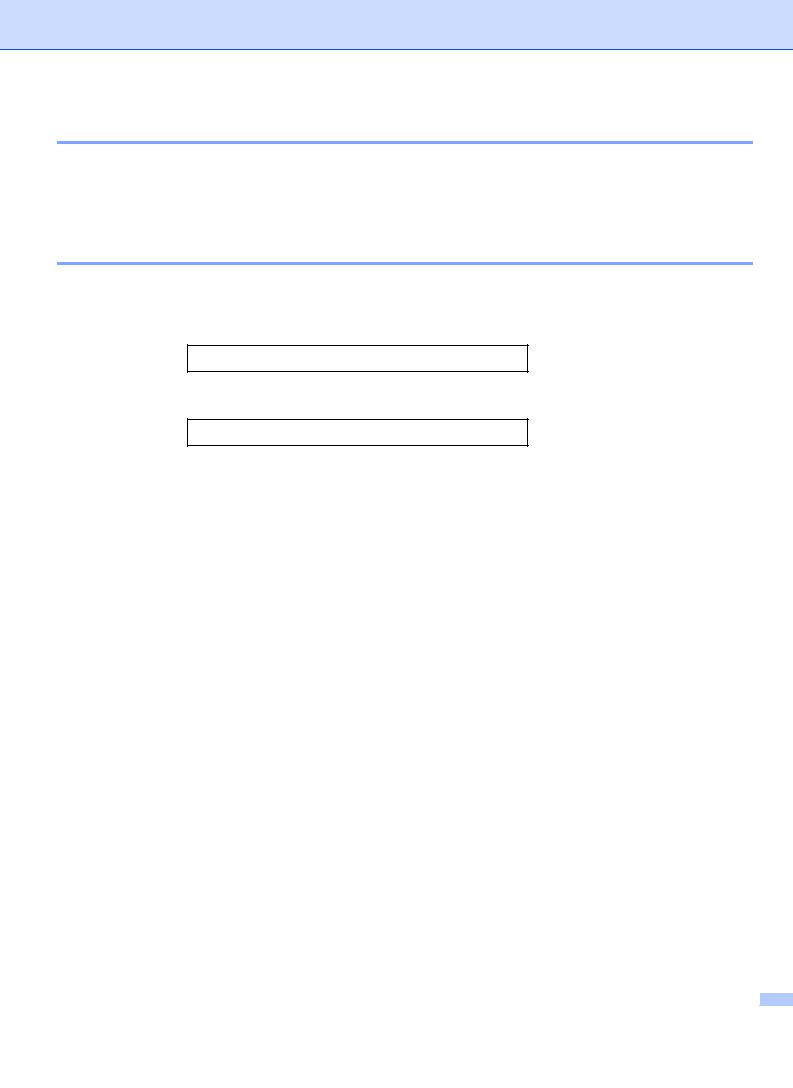
Internet address
Brother Global Web Site: http://www.brother.com
For Frequently Asked Questions (FAQs), Product Support, Driver Updates and Utilities: http://solutions.brother.com
Ordering accessories and supplies
In USA: 1-877-552-MALL (1-877-552-6255)
1-800-947-1445 (fax)
http://www.brothermall.com
In Canada: |
1-877-BROTHER |
http://www.brother.ca
iv
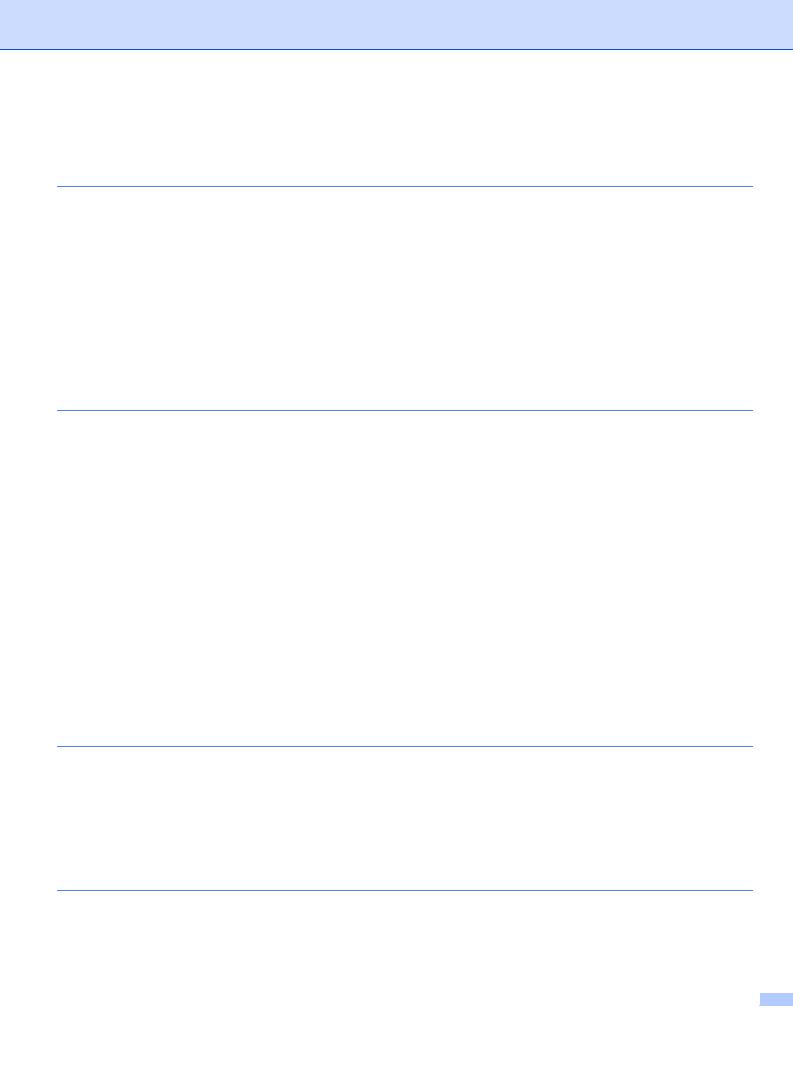
Table of Contents |
|
|
1 |
Introduction |
1 |
|
Overview.................................................................................................................................................... |
1 |
|
Network features........................................................................................................................................ |
2 |
|
Network printing................................................................................................................................... |
2 |
|
Network scanning ................................................................................................................................ |
2 |
|
Network PC Fax .................................................................................................................................. |
2 |
|
Management utilities............................................................................................................................ |
2 |
|
Internet Fax / Scan to E-mail Server (Download only) ........................................................................ |
3 |
|
Types of network connections ................................................................................................................... |
4 |
|
Network connection example .............................................................................................................. |
4 |
|
Protocols.................................................................................................................................................... |
6 |
|
TCP/IP protocols and functionalities.................................................................................................... |
6 |
2 |
Configuring your machine for a network |
9 |
|
Overview.................................................................................................................................................... |
9 |
|
IP addresses, subnet masks and gateways .............................................................................................. |
9 |
|
IP address ........................................................................................................................................... |
9 |
|
Subnet mask...................................................................................................................................... |
10 |
|
Gateway (and router)......................................................................................................................... |
11 |
|
Step by step chart.................................................................................................................................... |
11 |
|
Setting the IP address and subnet mask................................................................................................. |
12 |
|
Using the BRAdmin Light utility to configure your machine as a network printer .............................. |
12 |
|
Using the control panel to configure your machine for a network...................................................... |
14 |
|
Using other methods to configure your machine for a network ......................................................... |
14 |
|
Changing the print server settings........................................................................................................... |
15 |
|
Using the BRAdmin Light utility to change the print server settings .................................................. |
15 |
|
Using the BRAdmin Professional utility to change print server settings (for Windows®)................... |
16 |
|
Using the control panel to change the print server settings............................................................... |
16 |
|
Using Web Based Management (web browser) to change the print/scan server settings ................ |
17 |
|
Using Remote Setup to change the print server settings |
|
|
(not available for Windows Server® 2003) .................................................................................... |
17 |
|
Using other methods to change print server settings ........................................................................ |
17 |
3 |
Control panel setup |
18 |
|
LAN menu................................................................................................................................................ |
18 |
|
TCP/IP ............................................................................................................................................... |
18 |
|
Ethernet ............................................................................................................................................. |
25 |
|
Scan to FTP....................................................................................................................................... |
26 |
|
Restoring the network settings to factory default..................................................................................... |
27 |
|
Printing the Network Configuration List ................................................................................................... |
28 |
4 |
Driver Deployment Wizard (Windows® only) |
29 |
|
Overview.................................................................................................................................................. |
29 |
|
Connection methods................................................................................................................................ |
29 |
|
Peer-to-peer ...................................................................................................................................... |
29 |
|
Network Shared................................................................................................................................. |
30 |
|
|
v |
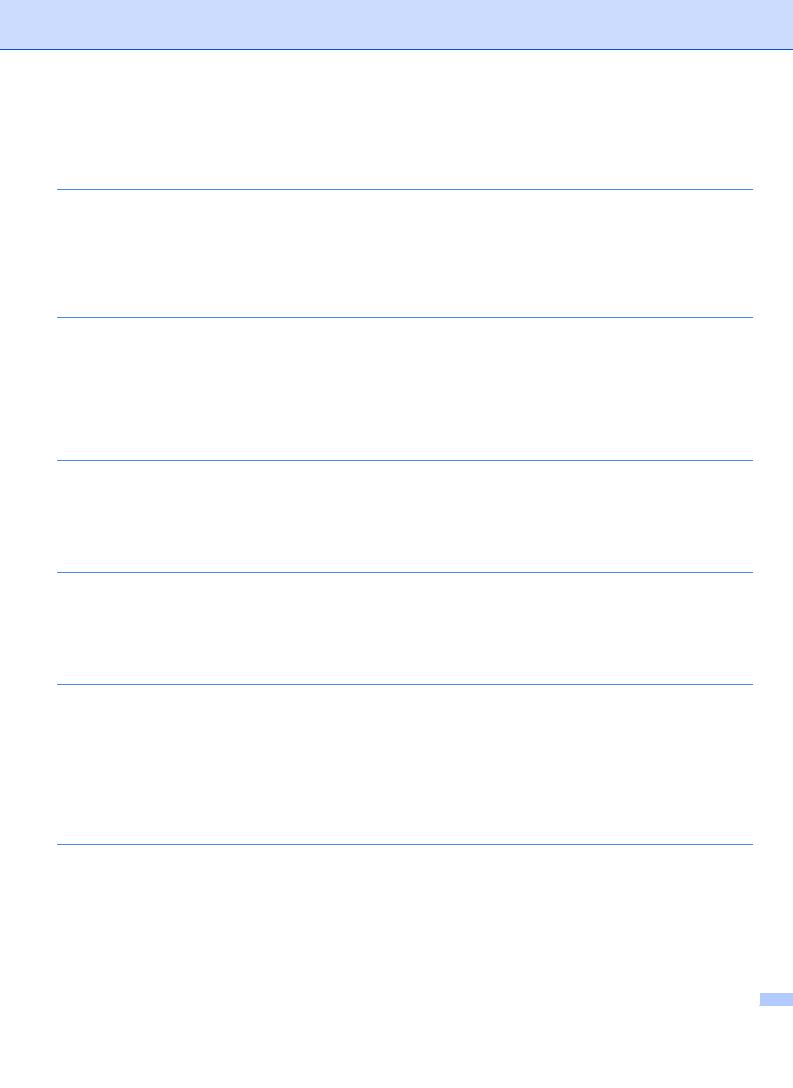
|
How to install the Driver Deployment Wizard software............................................................................ |
31 |
|
Using the Driver Deployment Wizard software ........................................................................................ |
32 |
5 |
Network printing from Windows®: basic TCP/IP Peer-to-Peer printing |
35 |
|
Overview.................................................................................................................................................. |
35 |
|
Configuring the standard TCP/IP port...................................................................................................... |
36 |
|
Printer driver not yet installed ............................................................................................................ |
36 |
|
Printer driver already installed ........................................................................................................... |
36 |
|
Other sources of information ................................................................................................................... |
37 |
6 |
Internet printing for Windows® |
38 |
|
Overview.................................................................................................................................................. |
38 |
|
IPP printing for Windows® 2000/XP, Windows Vista® and Windows Server® 2003 ............................... |
39 |
|
For Windows Vista® .......................................................................................................................... |
39 |
|
For Windows® 2000/XP and Windows Server® 2003 ....................................................................... |
41 |
|
Specifying a different URL................................................................................................................. |
43 |
|
Other sources of information ................................................................................................................... |
43 |
7 |
Network printing from Macintosh® |
44 |
|
Overview.................................................................................................................................................. |
44 |
|
Printing from a Macintosh® using the Simple Network Configuration capabilities................................... |
44 |
|
How to choose the printer driver (TCP/IP)......................................................................................... |
44 |
|
Other sources of information ............................................................................................................. |
47 |
8 |
Web Based Management |
48 |
|
Overview.................................................................................................................................................. |
48 |
|
How to configure the print server settings using Web Based Management (web browser) .................... |
49 |
|
Password information .............................................................................................................................. |
50 |
|
Changing the Scan to FTP configuration using a web browser............................................................... |
50 |
9 |
Security features |
51 |
|
Overview.................................................................................................................................................. |
51 |
|
Security methods for E-mail notification .................................................................................................. |
51 |
|
POP before SMTP (PbS)................................................................................................................... |
51 |
|
SMTP-AUTH (SMTP Authentication) ................................................................................................ |
51 |
|
APOP (Authenticated Post Office Protocol) ...................................................................................... |
51 |
|
Using E-mail notification with user authentication ................................................................................... |
52 |
|
Managing your network printer securely using BRAdmin Professional (for Windows®).......................... |
54 |
10 |
Troubleshooting |
55 |
|
Overview.................................................................................................................................................. |
55 |
|
General problems .................................................................................................................................... |
55 |
|
Network print software installation problems ........................................................................................... |
56 |
|
Printing problems..................................................................................................................................... |
57 |
|
Scanning and PC Fax problems.............................................................................................................. |
60 |
|
Protocol-specific troubleshooting............................................................................................................. |
62 |
|
Windows® 2000/XP, Windows Vista® and Windows Server® 2003 IPP troubleshooting.................. |
62 |
|
|
vi |
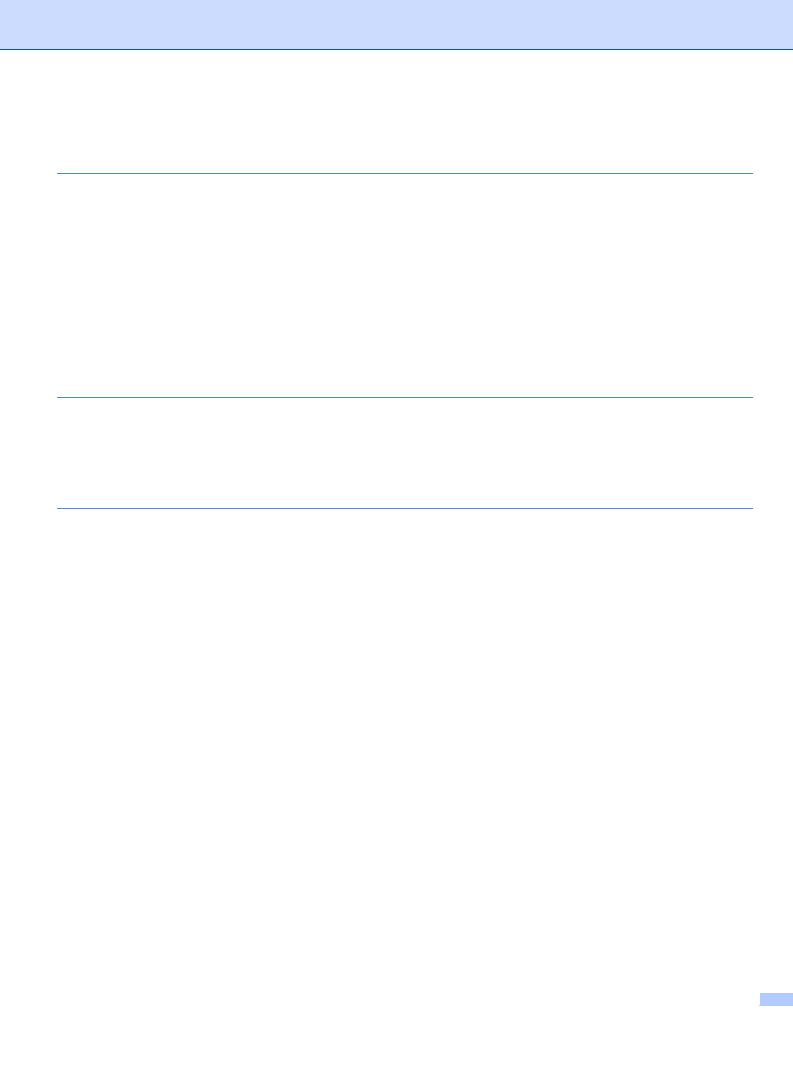
|
Web Based Management (web browser) troubleshooting (TCP/IP).................................................. |
62 |
A |
Appendix A |
63 |
|
Using services ......................................................................................................................................... |
63 |
|
Other ways to set the IP address (for advanced users and administrators) ............................................ |
63 |
|
Using DHCP to configure the IP address .......................................................................................... |
63 |
|
Using BOOTP to configure the IP address........................................................................................ |
64 |
|
Using RARP to configure the IP address .......................................................................................... |
65 |
|
Using APIPA to configure the IP address.......................................................................................... |
65 |
|
Using ARP to configure the IP address ............................................................................................. |
65 |
|
Using the TELNET console to configure the IP address ................................................................... |
66 |
|
Using the Brother Web BRAdmin server software for IIS to configure the IP address...................... |
67 |
|
Installation when using web services (For Windows Vista® users) ......................................................... |
68 |
|
Installation when using a Network Print Queue or Share (printer driver only) ......................................... |
69 |
B |
Appendix B |
70 |
|
Print server specifications........................................................................................................................ |
70 |
|
Ethernet wired network...................................................................................................................... |
70 |
|
Function table and default factory settings .............................................................................................. |
71 |
|
Entering Text ........................................................................................................................................... |
73 |
C |
Index |
74 |
vii
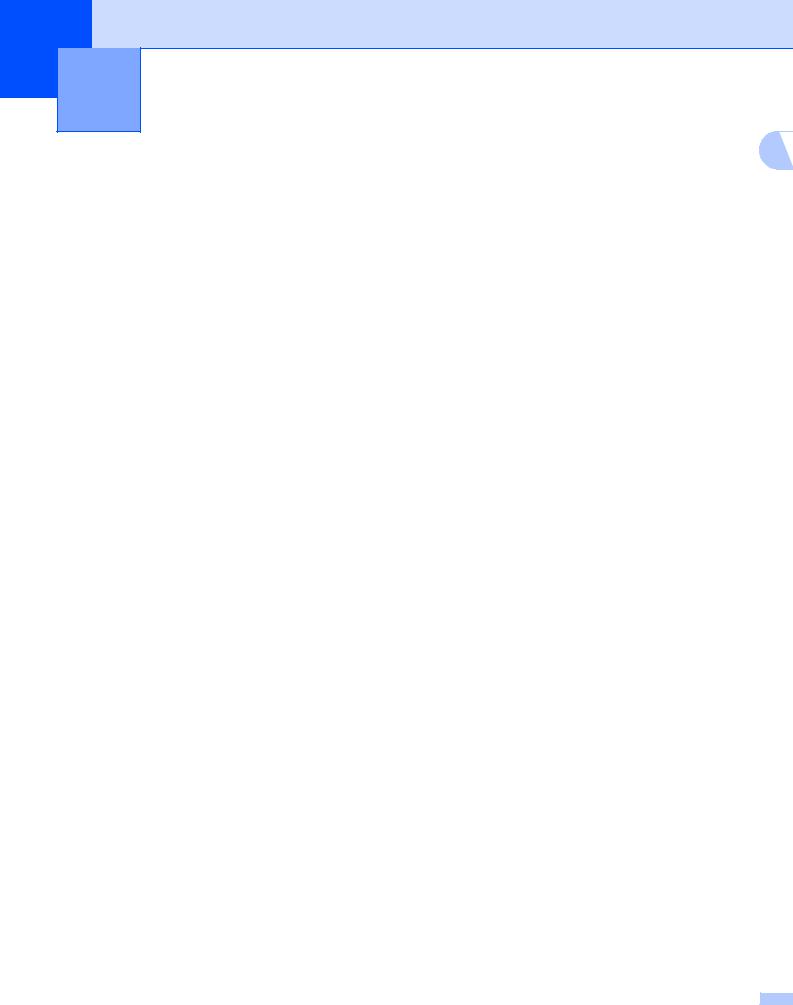
1 Introduction
1
Overview
The Brother machine can be shared on a 10/100 Mb wired Ethernet network using the internal network print server. The print server supports various functions and methods of connection depending on the operating system you are running on a network supporting TCP/IP. These functions include printing, scanning, PC Fax send, PC Fax receive, Remote Setup and Status Monitor. The following chart shows what network features and connections are supported by each operating system.
Operating Systems |
Windows® 2000 |
Windows Server® 2003 |
Mac OS® X 10.2.4 or |
|
|
Windows® XP |
Windows Server® 2003 |
greater |
|
|
|
|||
|
Windows® XP |
x64 Edition |
|
|
|
Professional x64 Edition |
|
|
|
|
Windows Vista® |
|
|
|
10/100BASE-TX Wired Ethernet |
r |
r |
r |
|
(TCP/IP) |
||||
|
|
|
||
Printing |
r |
r |
r |
|
BRAdmin Light |
r |
r |
r |
|
BRAdmin Professional 1 |
r |
r |
|
|
Web BRAdmin 1 |
r |
r |
|
|
Web Based Management |
r |
r |
r |
|
(web browser) |
||||
|
|
|
||
Internet Printing (IPP) |
r |
r |
|
|
Scanning |
r |
|
r |
|
PC Fax Send |
r |
|
r |
|
PC Pax Receive |
r |
|
|
|
Remote Setup |
r |
|
r |
|
Status Monitor |
r |
|
r |
|
Driver Deployment Wizard |
r |
r |
|
1 BRAdmin Professional and Web BRAdmin are available as a download from http://solutions.brother.com.
To use the Brother machine through a network, you need to configure the print server, and set up the computers you use.
1
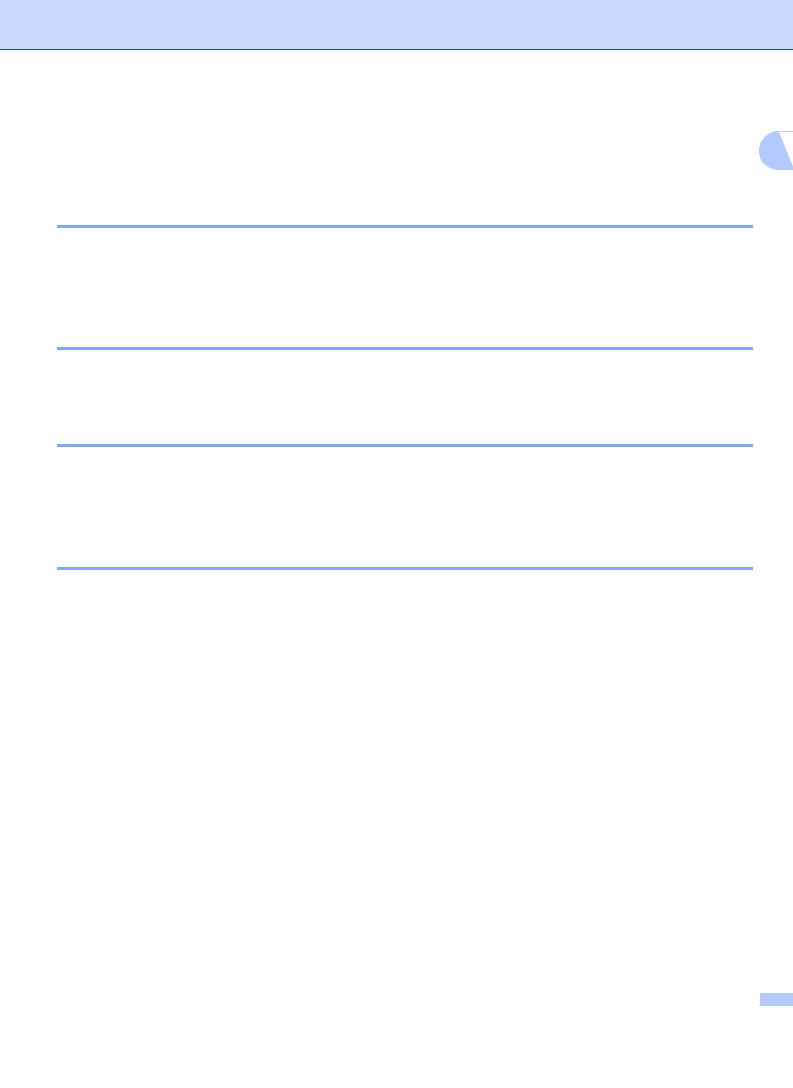
Introduction
Network features
1
Your Brother machine has the following basic network features.
Network printing
The print server provides printing services for Windows® 2000/XP, Windows Vista® and Windows Server®
2003 supporting the TCP/IP protocols and Macintosh® (Mac OS® X 10.2.4 or greater) supporting the TCP/IP protocols.
Network scanning
You can scan documents over the network to your computer (See Network Scanning in the Software User’s Guide).
Network PC Fax
You can directly send a PC file as a PC Fax over your network (See Brother PC-FAX Software for Windows®
and Sending a Fax for Macintosh® in the Software User’s Guide for a complete description). Windows® users can also PC Fax receive (See PC-FAX receiving in the Software User’s Guide).
Management utilities
BRAdmin Light
BRAdmin Light is a utility for initial setup of Brother network connected devices. This utility can search for Brother products on your network, view the status and configure basic network settings, such as IP address.
The BRAdmin Light utility is available for Windows® 2000/XP, Windows Vista® and Windows Server® 2003 and Mac OS® X 10.2.4 or greater computers. For installing BRAdmin Light on Windows®, please see the
Quick Setup Guide provided with the machine. For Macintosh® users, BRAdmin Light will be installed automatically when you install the printer driver. If you have already installed the printer driver, you don’t have to install it again.
For more information on BRAdmin Light, visit us at http://solutions.brother.com
2
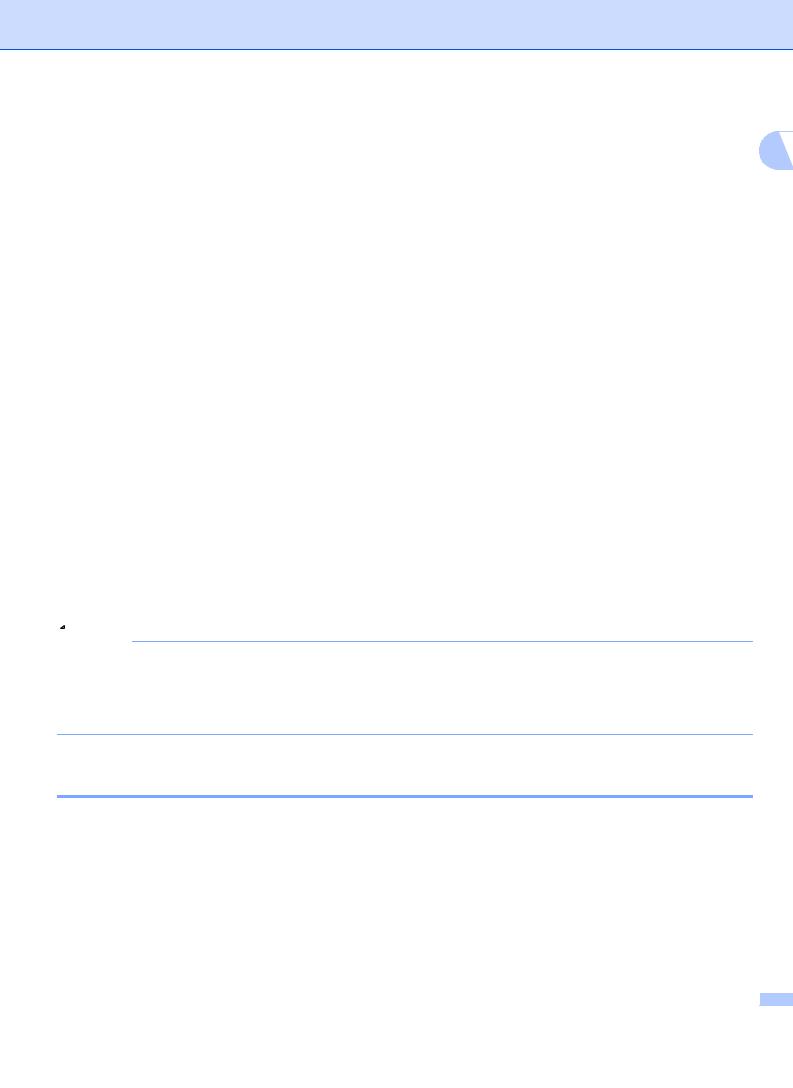
Introduction
BRAdmin Professional (for Windows®) |
1 |
BRAdmin Professional is a utility for more advanced management of network connected Brother devices. |
|
This utility can search for Brother products on your network, view the status and configure the network |
|
settings from a computer running Windows®. BRAdmin Professional has additional features from BRAdmin Light.
For more information and to download the software, visit us at http://solutions.brother.com
Web BRAdmin (for Windows®)
Web BRAdmin is a utility for managing network connected Brother devices. This utility can search for Brother products on your network, view the status and configure the network settings. Unlike BRAdmin Professional,
which is designed for Windows® only, Web BRAdmin is a server based utility that can be accessed from any client PC with a web browser that supports JRE (Java Runtime Environment). By installing the Web BRAdmin
server utility on a computer running IIS 1, administrators can connect to the Web BRAdmin server using a web browser, which then communicates with the device itself.
For more information and to download the software, visit us at http://solutions.brother.com
1 Internet Information Server 4.0 or Internet Information Service 5.0/5.1/6.0/7.0
Remote Setup
The Remote Setup software allows you to configure network settings from a Windows® or Macintosh® (Mac OS® X 10.2.4 or greater) computer. (See Remote Setup in the Software User’s Guide).
Web Based Management (web browser)
The Web Based Management allows you to monitor Brother printer’s status or change some of its configuration settings using a web browser.
 Note
Note
We recommend Microsoft Internet Explorer 6.0® (or greater) or Firefox® 1.0 (or greater) for Windows® and
Safari™ 1.0 for Macintosh®. Please also make sure that JavaScript and Cookies are always enabled in whichever browser you use. We recommend you upgrade to Safari™ 1.2 or greater to enable JavaScript. If a different web browser is used, make sure it is compatible with HTTP 1.0 and HTTP 1.1.
Internet Fax / Scan to E-mail Server (Download only)
The Brother machine can be assigned an E-mail address allowing you to send, receive or forward documents over a Local Area Network or the Internet to PC’s or other Internet Fax machines. In order to use this function, please download the necessary software from our web site The Brother Solutions Center (http://solutions.brother.com). Before using this function, you have to configure the necessary machine settings by using the machine’s control panel. For details, please refer to the user’s guide for Internet Fax on the web site listed above.
3
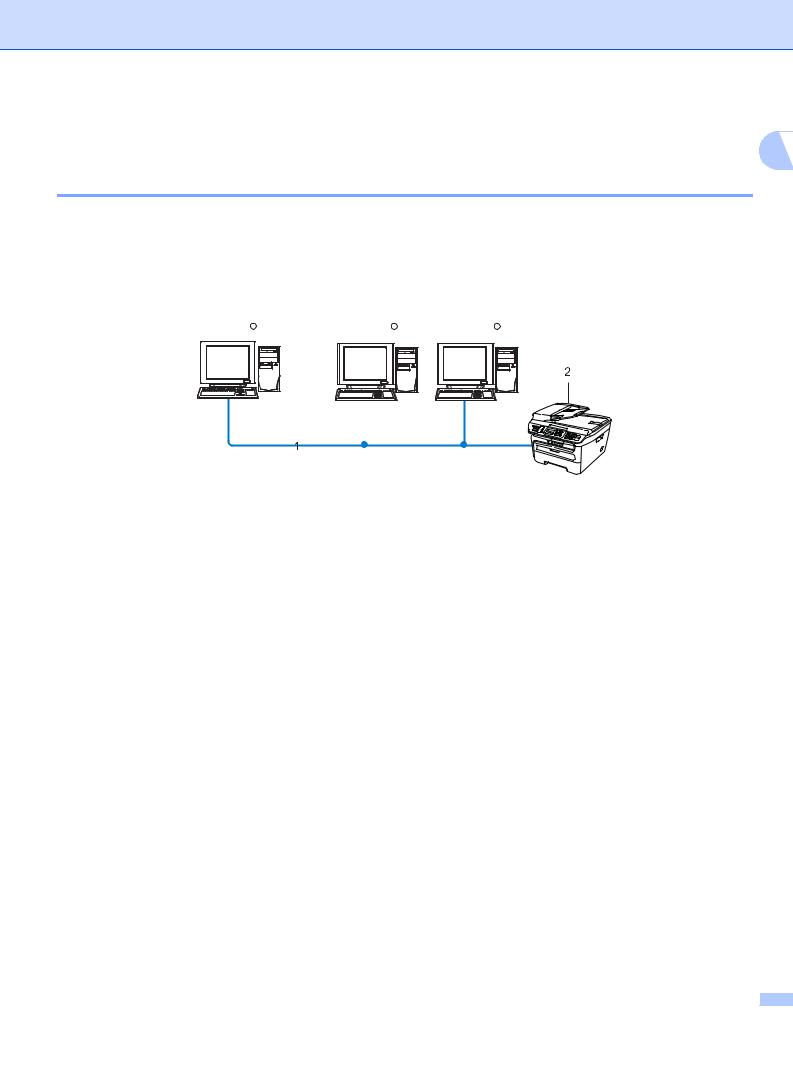
Introduction
Types of network connections
1
Network connection example
Generally there are two types of network connections: Peer-to-Peer and Network Shared environment.
Peer-to-Peer printing using TCP/IP
In a Peer-to-Peer environment, each computer directly sends and receives data to each device. There is no central server controlling file access or printer sharing.
WindowsR |
Windows R |
Windows R |
TCP/IP |
|
|
TCP/IP |
|
|
||
|
|
1Router
2Network printer (your machine)
In a smaller network of 2 or 3 computers, we recommend the Peer-to-Peer printing method as it is easier to configure than the Network Shared printing method described on the following page. See Network Shared printing on page 5.
Each computer must use the TCP/IP Protocol.
The Brother machine needs to have an appropriate IP address configuration.
If you are using routers, the Gateway address must be configured on the computers and the Brother machine.
The Brother machine can also communicate with Macintosh®. (TCP/IP compatible operating systems)
4
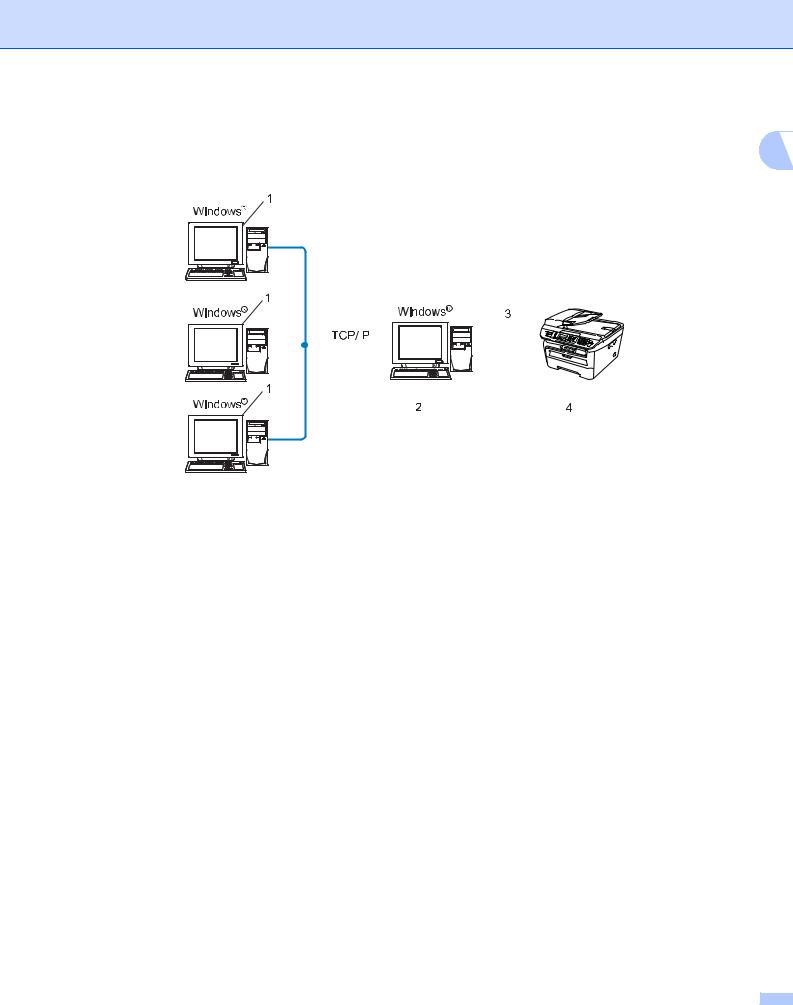
Introduction
Network Shared printing
In a Network Shared environment, each computer sends data via a centrally controlled computer. This type |
1 |
||||||||||||||||
of computer is often called a “Server” or a “Print Server”. Its job is to control the printing of all print jobs. |
|
||||||||||||||||
|
|
|
|
|
|
|
|
|
|
|
|
|
|
|
|
|
|
|
|
|
|
|
|
|
|
|
|
|
|
|
|
|
|
|
|
|
|
|
|
|
|
|
|
|
|
|
|
|
|
|
|
|
|
|
|
|
|
|
|
|
|
|
|
|
|
|
|
|
|
|
|
|
|
|
|
|
|
|
|
|
|
|
|
|
|
|
|
|
|
|
|
|
|
|
|
|
|
|
|
|
|
|
|
|
|
|
|
|
|
|
|
|
|
|
|
|
|
|
|
|
|
|
|
|
|
|
|
|
|
|
|
|
|
|
|
|
|
|
|
|
|
|
|
|
|
|
|
|
|
|
|
|
|
|
|
|
|
|
|
|
|
|
|
|
|
|
|
|
|
|
|
|
|
|
|
|
|
|
|
|
|
|
|
|
|
|
|
|
|
|
|
|
|
|
|
|
|
|
|
|
|
|
|
|
|
|
|
|
|
|
|
|
|
|
|
|
|
|
|
|
|
|
|
|
|
|
|
|
|
|
|
|
|
|
|
|
|
|
|
|
|
|
|
|
|
|
|
|
|
|
|
|
|
|
|
|
|
|
|
|
|
|
|
|
|
|
|
|
|
|
|
|
|
|
|
|
|
|
|
|
|
|
|
|
|
|
|
1Client computer
2Also known as “Server” or “Print server”
3TCP/IP or USB (where available)
4Printer (your machine)
In a larger network, we recommend a Network Shared printing environment.
The “server” or the “print server” must use the TCP/IP print protocol.
The Brother machine needs to have an appropriate IP address configuration unless the machine is connected via the USB interface at the server.
5
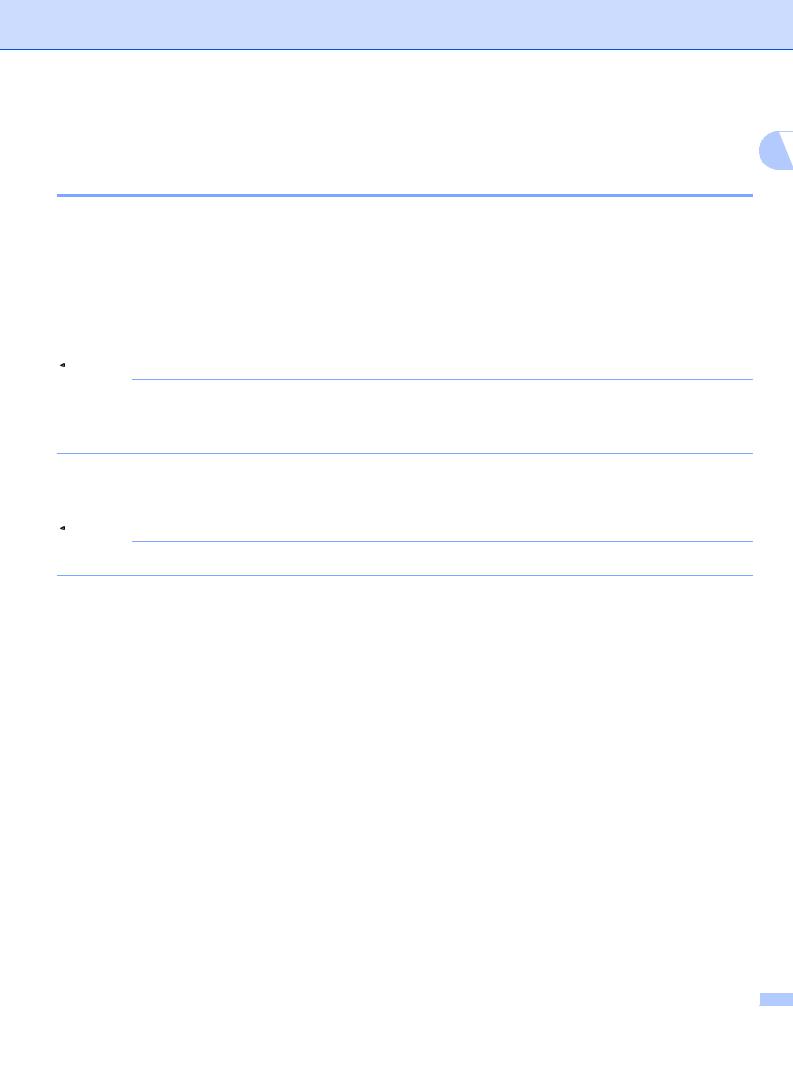
Introduction
Protocols
1
TCP/IP protocols and functionalities
Protocols are the standardized sets of rules for transmitting data on a network. Protocols allow users to gain access to network connected resources.
The print server used on this Brother product supports the TCP/IP (Transmission Control Protocol/Internet Protocol) protocol.
TCP/IP is the most popular set of protocols used for communication such as Internet and E-mail. This protocol can be used in almost all operating systems such as Windows®, Macintosh® and Linux.
The following TCP/IP protocols are available on this Brother product.
 Note
Note
•You can configure the protocol settings by using the HTTP (web browser). See How to configure the print server settings using Web Based Management (web browser) on page 49.
•For security features, see Security methods for E-mail notification on page 51.
DHCP/BOOTP/RARP
By using the DHCP/BOOTP/RARP protocols, the IP address can be automatically configured.
 Note
Note
To use the DHCP/BOOTP/RARP protocols, please contact your network administrator.
APIPA
If you do not assign an IP address manually (using the control panel of the machine or the BRAdmin software) or automatically (using a DHCP/BOOTP/RARP server), the Automatic Private IP Addressing (APIPA) protocol will automatically assign an IP address from the range 169.254.1.0 to 169.254.254.255.
DNS client
The Brother print server supports the Domain Name System (DNS) client function. This function allows the print server to communicate with other devices by using its DNS name.
LPR/LPD
Commonly used printing protocols on a TCP/IP network.
SMTP client
Simple Mail Transfer Protocol (SMTP) client is used to send E-mails via Internet or Intranet.
Port9100
Another commonly used printing protocol on a TCP/IP network.
6

Introduction
IPP
The Internet Printing Protocol (IPP Version 1.0) allows you to print documents directly to any accessible |
1 |
printer via the internet. |
|
mDNS
mDNS allows the Brother print server to automatically configure itself to work in a Mac OS® X Simple Network Configured system. (Mac OS® X 10.2.4 or greater).
TELNET
The Brother print server supports TELNET server for command line configuration.
SNMP
The Simple Network Management Protocol (SNMP) is used to manage network devices including computers, routers and Brother network ready machines in a TCP/IP network.
LLTD
The Link Layer Topology Discovery protocol (LLTD) lets you locate the Brother machine easily on the
Windows Vista® network map. Your Brother machine will be shown with a distinctive icon and the node name. The default setting for this protocol is Off.
LLMNR
The Link-Local Multicast Name Resolution protocol (LLMNR) resolves the names of neighboring computers, if the network does not have a Domain Name System (DNS) server. The LLMNR Responder function works in both the IPv4 or IPv6 environment when using a computer that has the LLMNR Sender function such as
Windows Vista®.
Web services
The Web Services protocol enables Windows Vista® users to install the Brother printer driver by right clicking the machine icon from the Start / Network selection. (See Installation when using web services (For Windows Vista® users) on page 68). The Web Services also lets you check the current status of the machine from your computer.
Web server (HTTP)
The Brother print server is equipped with a built in web server that allows you to monitor its status or change some of its configuration settings using a web browser.
 Note
Note
We recommend Microsoft Internet Explorer 6.0® (or greater) or Firefox® 1.0 (or greater) for Windows® and
Safari™ 1.0 for Macintosh®. Please also make sure that JavaScript and Cookies are always enabled in whichever browser you use. We recommend you upgrade to Safari™ 1.2 or greater to enable JavaScript. If a different web browser is used, make sure it is compatible with HTTP 1.0 and HTTP 1.1.
7
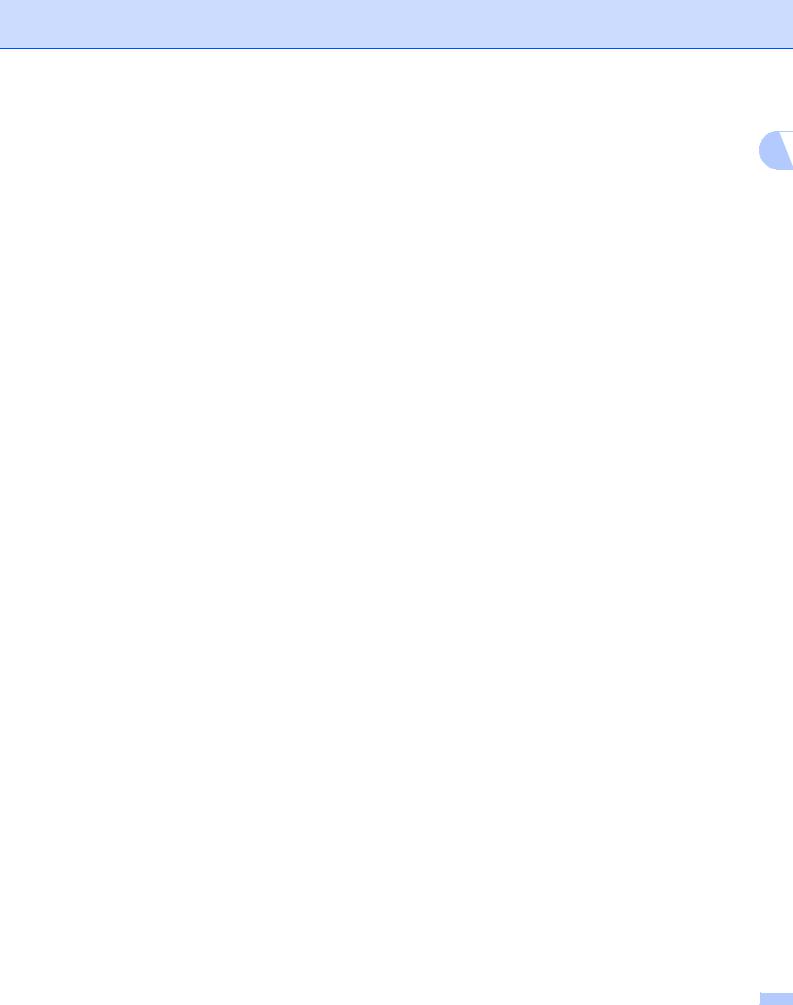
Introduction
FTP
The File Transfer Protocol (FTP) allows the Brother machine to scan black and white or color documents |
1 |
directly to an FTP server located locally on your network or on the internet. |
|
IPv6
This machine is compatible with IPv6, the next generation internet protocol. For more information on the IPv6 protocol, visit http://solutions.brother.com.
8

2 Configuring your machine for a network
Overview
2
Before using your Brother machine on your network, you must install the Brother software and also configure the appropriate TCP/IP network settings on the machine itself. To do this, we recommend that you use the Brother installer on the Brother CD-ROM as this will guide you through the software and network installation.
Please follow the instructions in the supplied Quick Setup Guide.
 Note
Note
If you do not wish to, or are unable to use the Brother installer or any of Brother’s software tools, you can also use the machine’s control panel to change network settings. For more information, see Control panel setup on page 18.
IP addresses, subnet masks and gateways
To use the machine in a networked TCP/IP environment, you need to configure the IP address and subnet mask. The IP address you assign to the print server must be on the same logical network as your host computers. If it is not, you must properly configure the subnet mask and the gateway address.
IP address
An IP address is a series of numbers that identifies each computer connected to a network. An IP address consists of four numbers separated by dots. Each number is between 0 and 255.
Example: In a small network, you would normally change the final number.
•192.168.1.1
•192.168.1.2
•192.168.1.3
9

Configuring your machine for a network
How the IP address is assigned to your print server:
If you have a DHCP/BOOTP/RARP server in your network (typically a UNIX®/Linux or Windows® 2000/XP,
Windows Vista® or Windows Server® 2003 network) the print server will automatically obtain its IP address  from the DHCP server and register its name with any RFC 1001 and 1002-compliant dynamic name services. 2
from the DHCP server and register its name with any RFC 1001 and 1002-compliant dynamic name services. 2
 Note
Note
On smaller networks, the DHCP server may be the router.
For more information on DHCP, BOOTP and RARP, see Using DHCP to configure the IP
address on page 63, Using BOOTP to configure the IP address on page 64 and Using RARP to configure the IP address on page 65.
If you do not have a DHCP/BOOTP/RARP server, the Automatic Private IP Addressing (APIPA) protocol will automatically assign an IP address from the range 169.254.1.0 to 169.254.254.255. For more information on APIPA, see Using APIPA to configure the IP address on page 65.
If the APIPA protocol is disabled, the IP address of a Brother print server is 192.0.0.192. However, you can easily change this IP address number to match with the IP address details of your network. For information on how to change the IP address, see Setting the IP address and subnet mask on page 12.
Subnet mask
Subnet masks restrict network communication.
Example: Computer1 can talk to Computer 2
•Computer 1
IP Address: 192.168.1.2 Subnet Mask: 255.255.255.0
•Computer 2
IP Address: 192.168.1.3 Subnet Mask: 255.255.255.0
 Note
Note
0 denotes that there is no limit to communication at this part of the address.
In the above example, we can communicate with anything that has an IP address that begins with 192.168.1.x.
10
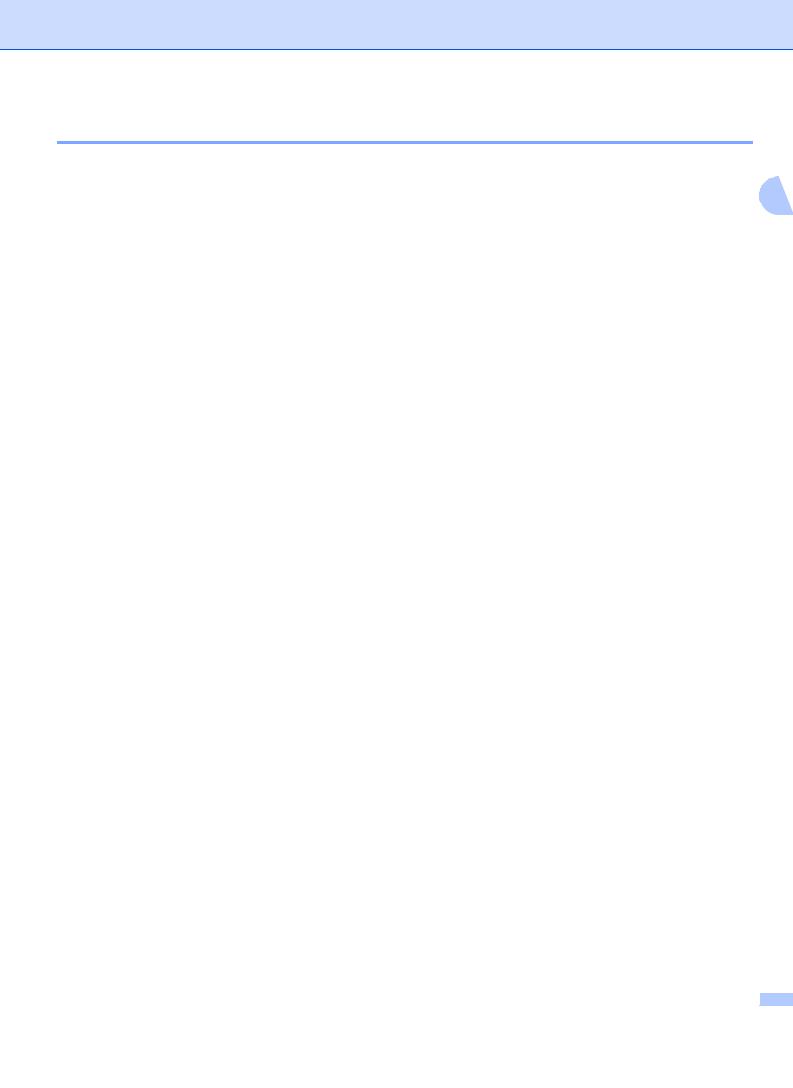
Configuring your machine for a network
Gateway (and router)
A gateway is a network point that acts as an entrance to another network and sends data transmitted via the network to an exact destination. The router knows where to direct data that arrives at the gateway. If a  destination is located at an external network, the router transmits data to the external network. If your network 2 communicates with other networks, you may need to configure the Gateway IP address. If you do not know
destination is located at an external network, the router transmits data to the external network. If your network 2 communicates with other networks, you may need to configure the Gateway IP address. If you do not know  the Gateway IP address then contact your Network Administrator.
the Gateway IP address then contact your Network Administrator.
Step by step chart
a Configure the TCP/IP settings.
Configure the IP address |
i |
See page 12 |
Configure the subnet mask |
i |
See page 12 |
Configure the gateway |
i |
See page 12 |
b Change the print server settings. |
|
|
Using the BRAdmin Light utility |
i |
See page 15 |
Using the BRAdmin Professional utility |
i |
See page 16 |
Using the control panel |
i |
See page 16 |
Using the Web Based Management (web browser) |
i |
See page 17 |
Using the Remote Setup |
i |
See page 17 |
Using other methods |
i |
See page 17 |
11

Configuring your machine for a network
Setting the IP address and subnet mask
Using the BRAdmin Light utility to configure your machine as a network printer
2
BRAdmin Light
The BRAdmin Light utility is designed for initial setup of the Brother network connected devices. It also can search for Brother products in a TCP/IP environment, view the status and configure basic network settings,
such as IP address. The BRAdmin Light utility is available for Windows® 2000/XP, Windows Vista®, Windows Server® 2003 and Mac OS® X 10.2.4 or greater.
How to configure your machine using the BRAdmin Light utility
 Note
Note
•Please use the BRAdmin Light utility version that was supplied on the CD-ROM with your Brother product. You can also download the latest Brother BRAdmin Light utility version from http://solutions.brother.com.
•If you require more advanced printer management, use the latest version of BRAdmin Professional utility that is available as a download from http://solutions.brother.com. This utility is only available for Windows® users.
•If you are using Personal Firewall software, disable it. Once you are sure that you can print, re-start your Personal Firewall software.
•Node name: The node name appears in current BRAdmin Light. The default node name of the network card in the printer is “BRNxxxxxxxxxxxx”.
•The default password for Brother print servers is “access”.
a
b
Start the BRAdmin Light utility.
For Windows® 2000/XP, Windows Vista® and Windows Server® 2003 users Click Start / All Programs 1 / Brother / BRAdmin Light / BRAdmin Light.
1 Programs for Windows® 2000 users
For Mac OS® X 10.2.4 or greater users
Double-click Mac OS X or Macintosh HD (Startup Disk) / Library / Printers / Brother / Utilities / BRAdmin Light.jar file.
BRAdmin Light will search for new devices automatically.
12
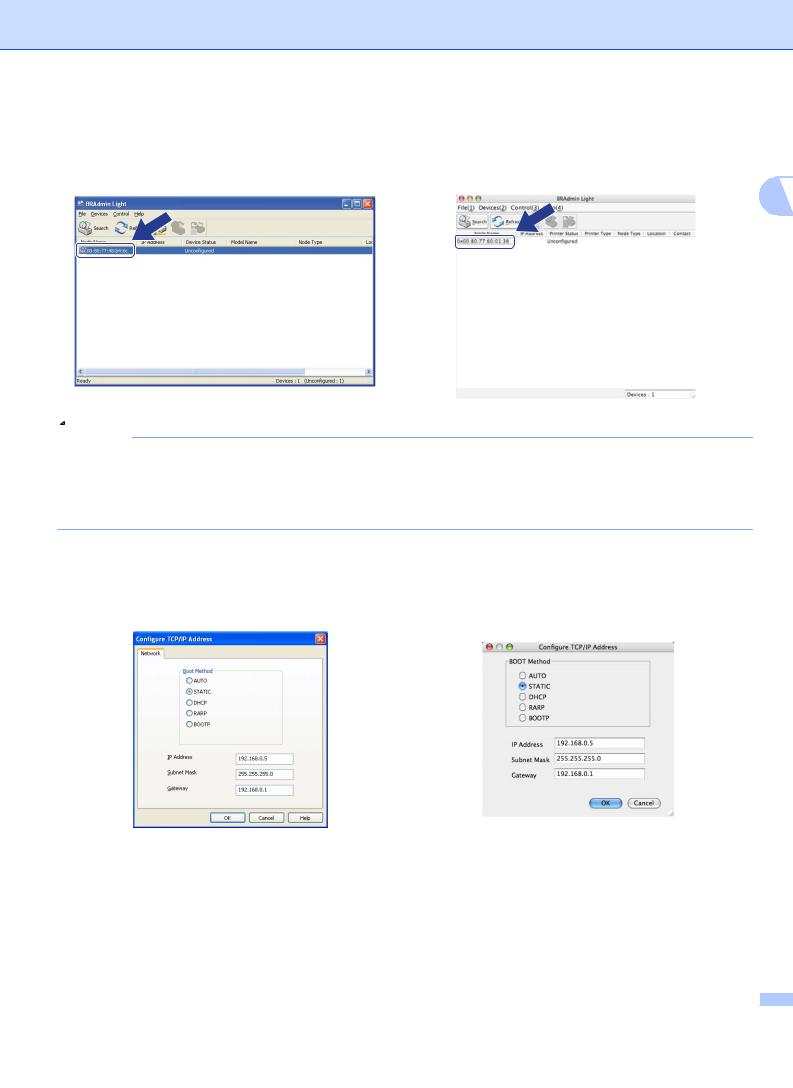
Configuring your machine for a network
c Double-click the unconfigured device.
Windows® |
Macintosh® |
2
 Note
Note
•If the print server is set to its factory default settings without using a DHCP/BOOTP/RARP server, the device will appear as Unconfigured in the BRAdmin Light utility screen.
•You can find the node name and Ethernet address (MAC address) by printing the Network Configuration List. See Printing the Network Configuration List on page 28.
d Choose STATIC from Boot Method. Enter the IP Address, Subnet Mask and Gateway (if needed) of your print server.
Windows® |
Macintosh® |
e Click OK.
f With the correctly programmed IP address, you will see the Brother print server in the device list.
13
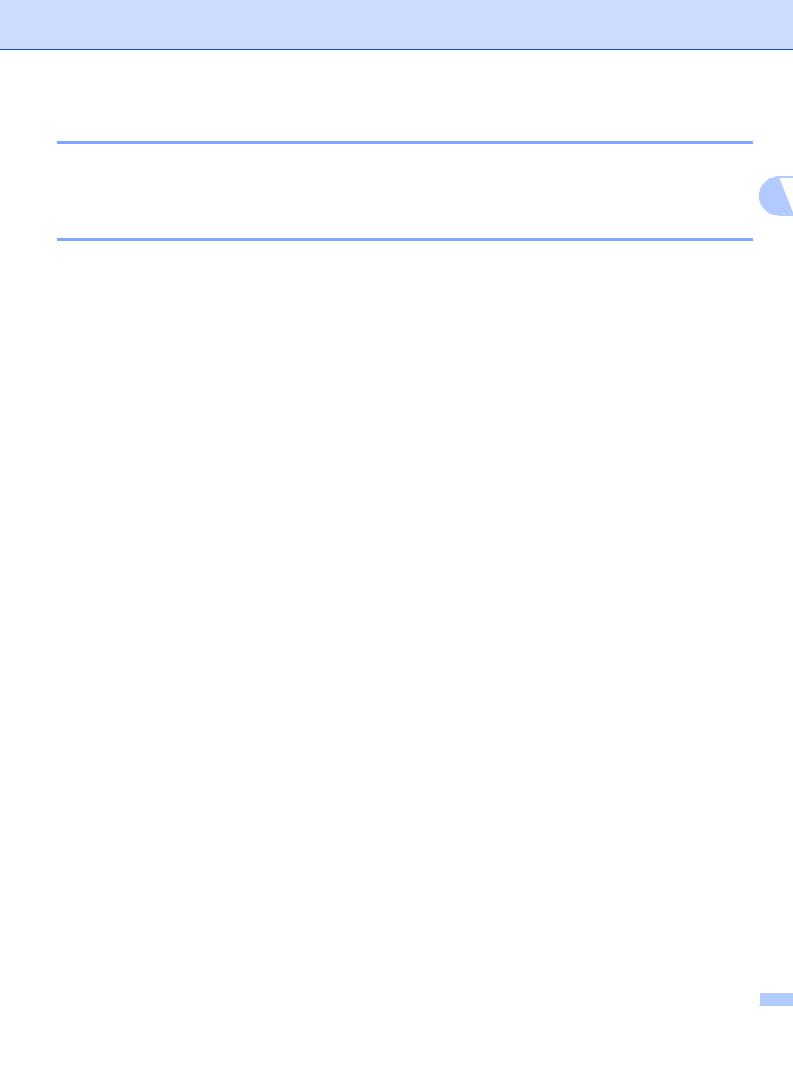
Configuring your machine for a network
Using the control panel to configure your machine for a network
You can configure your machine for a network using the control panel LAN menu. See Control panel
setup on page 18.
2
Using other methods to configure your machine for a network
You can configure your machine for a network using other methods. See Other ways to set the IP address (for advanced users and administrators) on page 63.
14

Configuring your machine for a network
Changing the print server settings
Using the BRAdmin Light utility to change the print server settings
2
a Start the BRAdmin Light utility.
For Windows® 2000/XP, Windows Vista® and Windows Server® 2003 users Click Start / All Programs 1/ Brother / BRAdmin Light / BRAdmin Light.
1 Programs for Windows® 2000 users
For Mac OS® X 10.2.4 or greater users
Double-click Mac OS X or Macintosh HD (Startup Disk) / Library / Printers / Brother / Utilities / BRAdmin Light.jar file.
b Choose the print server which you want to change the settings. c Choose Network Configuration from the Control menu.
d Enter a password. The default password is “access”. e You can now change the print server settings.
 Note
Note
If you want to change more advanced settings, use the BRAdmin Professional utility that is available as a download from http://solutions.brother.com.
15
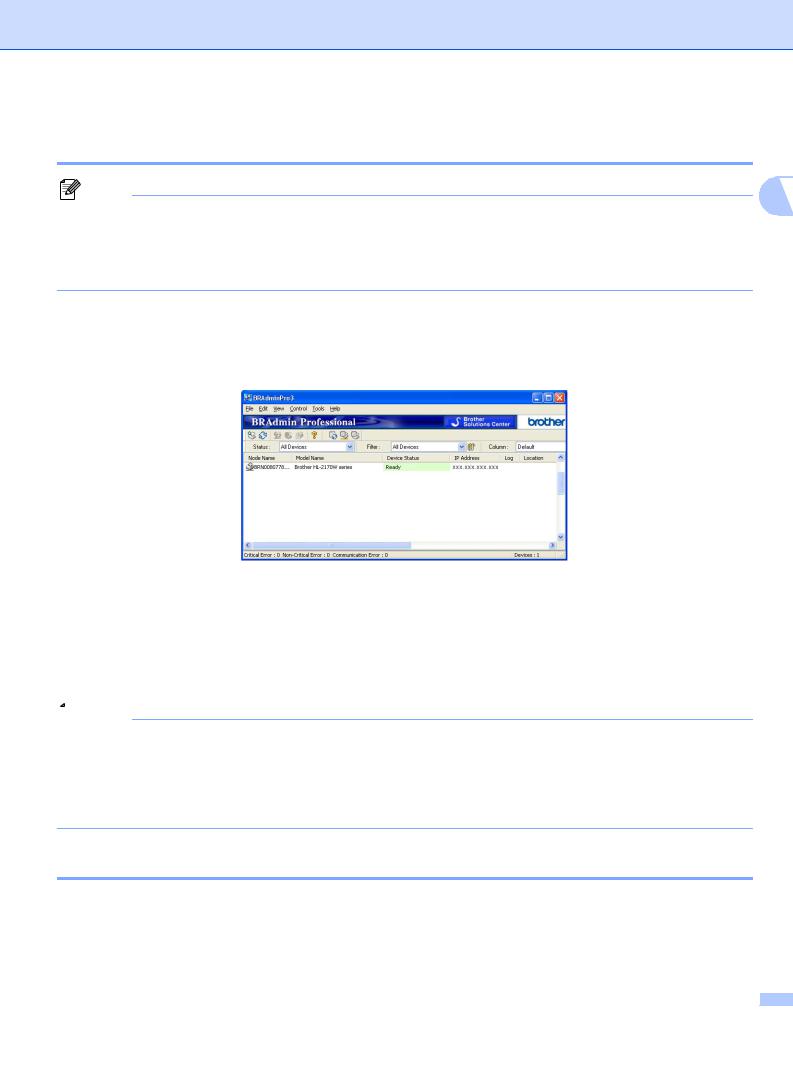
Configuring your machine for a network
Using the BRAdmin Professional utility to change print server settings (for Windows®)
Note |
2 |
• Please use the latest version of the BRAdmin Professional utility that is available as a download from http://solutions.brother.com This utility is only available for Windows® users.
•Node name: The Node name for each Brother device on the network appears in BRAdmin Professional. The default Node name is “BRNxxxxxxxxxxxx”.
a Start the BRAdmin Professional utility (from Windows® 2000/XP, Windows Vista® and Windows Server® 2003), by clicking Start / All Programs 1 / Brother Administrator Utilities / Brother BRAdmin Professional 3 / BRAdmin Professional 3.
1 Programs for Windows® 2000 users
b c d e
Choose the print server which you want to configure. Choose Configure Device from the Control menu. Enter a password. The default password is “access”. You can now change the print server settings.
 Note
Note
•If the print server is set to its factory default settings without using a DHCP/BOOTP/RARP server, the device will appear as APIPA in the BRAdmin Professional utility screen.
•You can find the node name and Ethernet address (MAC address) by printing out the Network Configuration List. See Printing the Network Configuration List on page 28 for information on how to print the Network Configuration List on your print server.
Using the control panel to change the print server settings
You can configure and change the print server settings using the control panel LAN menu. See Control panel setup on page 18.
16
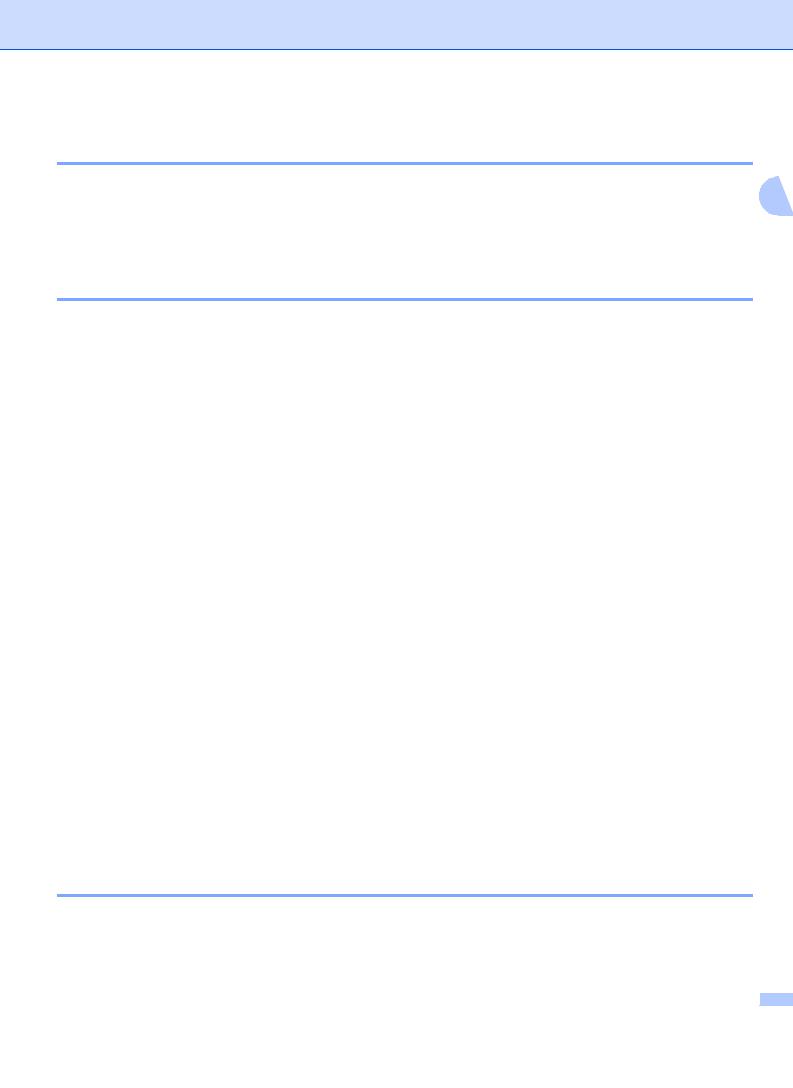
Configuring your machine for a network
Using Web Based Management (web browser) to change the print/scan server settings
A standard web browser can be used to change your print server settings using the HTTP (Hyper Text  Transfer Protocol). See How to configure the print server settings using Web Based Management (web 2 browser) on page 49.
Transfer Protocol). See How to configure the print server settings using Web Based Management (web 2 browser) on page 49.
Using Remote Setup to change the print server settings (not available for Windows Server® 2003)
Remote Setup for Windows®
The Remote Setup application allows you to configure network settings from a Windows® application. When you access this application, the settings on your machine will be downloaded automatically to your PC and displayed on your PC screen. If you change the settings, you can upload them directly to the machine.
a Click the Start button, All Programs 1, Brother, MFC-7440N LAN, then Remote Setup.
1 Programs for Windows® 2000 users
b c d
Enter a password. The default password is “access”.
Click TCP/IP.
You can now change the print server settings.
Remote Setup for Macintosh®
The Remote Setup application allows you to configure many MFC settings from a Macintosh® application. When you access this application, the settings on your machine will be downloaded automatically to your
Macintosh® and displayed on your Macintosh® screen. If you change the settings, you can upload them directly to the machine.
a Double click the Mac OS X or Macintosh HD (Startup Disk) icon on your desktop, Library, Printers,
Brother, then Utilities.
b Double click the Remote Setup icon.
c Enter a password. The default password is “access”. d Click TCP/IP.
e You can now change the print server settings.
Using other methods to change print server settings
You can configure your network printer using other methods. See Other ways to set the IP address (for advanced users and administrators) on page 63.
17
